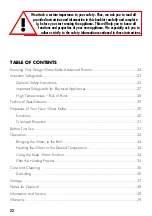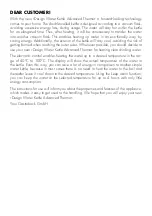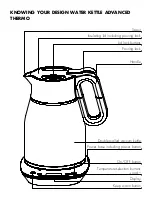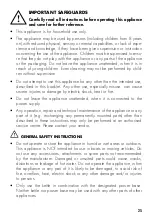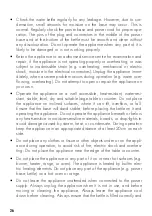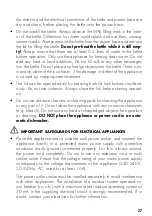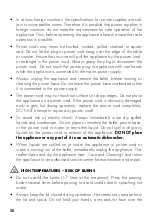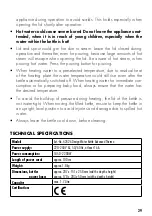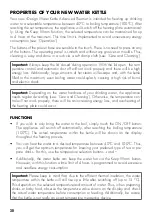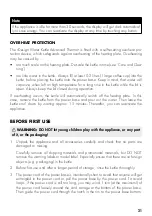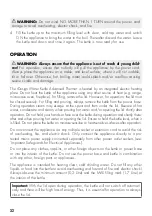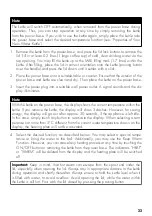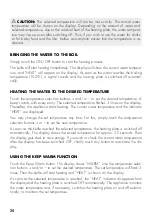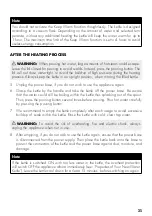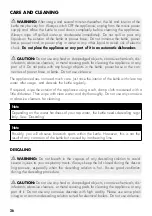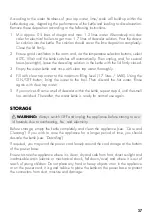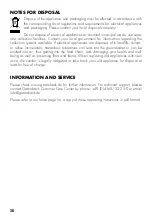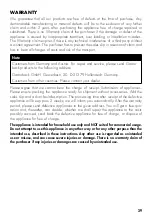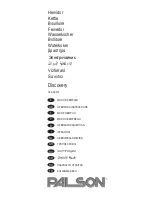
36
CARE AND CLEANING
WARNING:
After usage and several minutes thereafter, the lid and interior of the
kettle may be very hot. Always switch OFF the appliance, unplug from the mains power
supply and allow the kettle to cool down completely before cleaning the appliance.
Always wipe off spilled water or condensate immediately. Do not spill or pour any
liquids on the exterior of the kettle or power base. Do not immerse the kettle, power
base, power cord, or power plug in water or any other liquid to avoid risk of electric
shock.
Do not place the appliance or any part of it in an automatic dishwasher.
CAUTION:
Do not use any hard or sharp-edged objects, corrosive chemicals, dis-
infectants, abrasive cleaners, or metal scouring pads for cleaning the appliance or any
part of it. Do not poke with any foreign objects in the kettle, power base or the con-
nectors of power base or kettle. Do not use violence.
The appliance does not need much care. Just rinse the interior of the kettle with clear tap
water after usage, and descale the kettle regularly.
If required, wipe the exterior of the appliance using a soft, damp cloth moistened with a
little dishwater. Then wipe with clear water and dry thoroughly. Do not use any corrosive
or abrasive cleaners for cleaning.
Note
Depending on the water hardness of your tap water, the kettle needs descaling regu-
larly. See: ‘Descaling’
Note
Possibly, you will observe brownish spots within the kettle. However, this is not the
result of any corrosion of the kettle but caused by iron-bearing lime.
DESCALING
WARNING:
Do not breath in the vapours of any descaling solution to avoid
severe injuries to your respiratory tracts. Always keep the lid closed during the desca-
ling process, especially when the descaling solution is hot. Ensure good ventilation
during the descaling procedure.
CAUTION:
Do not use any hard or sharp-edged objects, corrosive chemicals, dis-
infectants, abrasive cleaners, or metal scouring pads for cleaning the appliance or any
part of it. Do not use any corrosive descaler with high acidity. Please use some plain
vinegar or common descaling solution suited for electrical boilers. Do not use violence.

